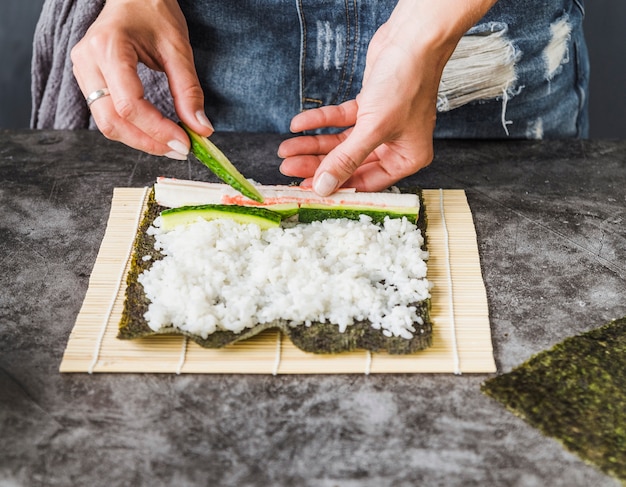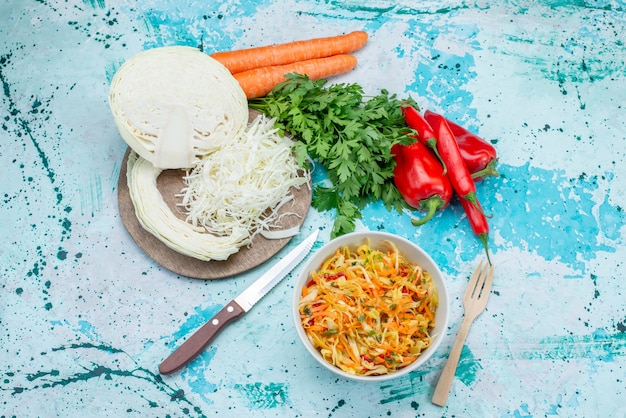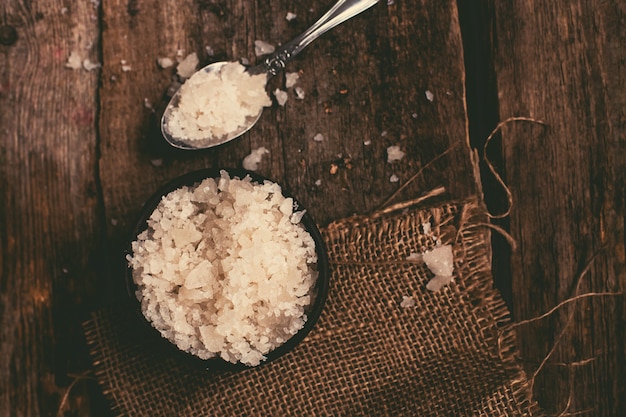Let’s face it, we’ve all been there – you’ve cooked up a massive pot of rice, and you know you’re not going to eat it all before it goes bad. It happens to the best of us! You could just chuck the leftovers in the fridge, but who wants to deal with that mushy, sticky mess later? Freezing is the answer, my friend. It's a lifesaver, allowing you to enjoy perfectly cooked rice whenever you crave it.
But there’s a trick to it, you see. You can't just freeze any old rice. It needs to be cooked just right to survive the freeze-thaw cycle without turning into a clumpy, inedible mess. Don't worry, though! I've been cooking rice for years, and I've got the perfect recipe and technique to get you the most delicious, freezer-friendly rice you’ve ever tasted. So grab your measuring cups, let’s get cooking!
(Part 1) Why Freeze Rice?

Freezing rice isn't just about saving those extra portions. It's about creating a pantry staple that's ready to go whenever you need it. Here's why freezing rice is a game-changer:
Convenience
Freezing rice is a major time-saver. No more standing over the stove for 20 minutes every time you crave rice. Just grab a bag from the freezer and you’re good to go! It's perfect for those busy weeknights when you don’t have time to cook.
Variety
Frozen rice is a blank canvas for all sorts of culinary adventures. Think about it: stir-fries, rice bowls, salads, and even a topping for creamy soups. You can even use it for those rice-based desserts that call for pre-cooked rice. The possibilities are endless!
Waste Reduction
Freezing rice is a fantastic way to reduce food waste. Instead of tossing out those leftover portions, you're making sure they get eaten and enjoyed. It's a win-win for your wallet and the planet!
(Part 2) choosing the right rice

Not all rice is created equal, my friend. Some types are better suited for freezing than others. It's all about the grain structure and how it holds up to the freeze-thaw cycle.
Here’s what I’ve learned over the years:
Long-grain rice is my go-to for freezing. It cooks up nice and fluffy with those distinct, separate grains. The best part? It doesn’t get sticky or clumpy when frozen, making it ideal for stir-fries, salads, and rice bowls. It's versatile, holds its shape beautifully, and always tastes great.
Medium-grain rice is a decent option for freezing, but it can get a bit stickier than long-grain. Think of it like a middle ground. It’s still tasty and works well in some dishes, but be prepared to break it up a bit after defrosting. It's great for rice puddings or any dish where a little stickiness is welcome.
Short-grain rice is a bit more tricky. It's naturally sticky, and that stickiness intensifies when frozen. If you’re going to freeze it, I recommend cooking it a little less than usual, so it’s not quite as sticky. You'll be dealing with a lot of clumping, though. I'd avoid short-grain rice for freezing if possible. It's not worth the hassle, in my opinion.
Wild rice isn't actually rice, but a type of grass seed. It’s delicious and nutritious, but a real pain to freeze. It tends to get mushy and lose its texture. Stick to using it fresh – it's worth it!
Brown rice is a good choice for freezing. It’s a little less prone to clumping than white rice, thanks to its firmer texture. It might lose a bit of flavour and texture after freezing, but it's still a good option for those who prefer a chewier rice.
(Part 3) The Perfect Cooking Technique

Now, here’s the key to freezing rice that stays fluffy and delicious: you’ve got to cook it just right.
Trust me, these simple steps will make all the difference:
Use the Right Ratio
The golden ratio for cooking rice is 1 cup of rice to 2 cups of water. This ensures that your rice cooks perfectly, absorbing the water and becoming fluffy and light. Don’t deviate from this ratio, or your rice might end up too mushy or too dry.
Bring the Water to a Boil
Pour your water into a saucepan and bring it to a rolling boil. This is a crucial step that allows the rice to cook evenly and prevents it from becoming mushy.
Add the Rice
Once the water is boiling, gently add your rice to the saucepan. Don’t stir it yet, just let it sit for a few minutes. This allows the rice to absorb some of the water and start cooking evenly.
Reduce Heat and Simmer
After a few minutes, reduce the heat to a low simmer and cover the saucepan with a lid. Let the rice simmer for 15-20 minutes, or until the water is absorbed and the rice is cooked through. You can tell it’s done when the rice is tender and the center of each grain is cooked.
Fluff the Rice
Once the rice is cooked, remove it from the heat and fluff it with a fork. This helps to separate the grains and prevents them from sticking together. It’s important to let the steam escape for a few minutes before you fluff. This will help to prevent the rice from becoming too dense.
Cool the Rice Completely
Before freezing, let your rice cool down completely. This is an essential step! Freezing hot rice can lead to mushiness and clumping. Spread the rice out on a baking sheet or in a shallow container to cool. You can speed up the cooling process by putting the rice in the fridge for a few minutes.
(Part 4) Freezing Rice: The Right Way
You’ve cooked the rice perfectly. Now it’s time to freeze it.
Here's how to do it:
Use Freezer-Safe Containers
Choose airtight containers or freezer bags. You want to make sure your rice doesn’t get freezer burn. The key here is to make sure the container is completely sealed. A small air pocket in the container could lead to freezer burn.
Portion Out Your Rice
To make things easier later, I recommend portioning out your rice into individual servings or meal-sized portions. This makes it really simple to grab and defrost just what you need.
Label and Date Your Rice
Don’t forget to label your rice with the date you froze it. This helps you keep track of how long it’s been in the freezer. I usually label my rice with the date and the type of rice, like “long grain rice, 12/01/2023”. It’s super helpful when you're trying to find the right container in a packed freezer.
Freeze Your Rice Flat
If you’re using freezer bags, I recommend laying the bags flat in the freezer. This helps to prevent the rice from clumping together.
Don’t Overfill Your Containers
Give your rice some space in the container. Don’t pack it in too tightly. This allows the rice to expand and contract as it freezes and thaws without getting crushed.
(Part 5) Defrosting Your Rice
Now that your rice is frozen, you’re ready to defrost it and enjoy.
Here’s how to do it:
Refrigerator Defrosting
This is the safest and most common method. Transfer your frozen rice from the freezer to the refrigerator and allow it to defrost overnight. It takes around 8-10 hours. The refrigerator defrosting method ensures the rice thaws slowly and evenly, preserving its texture and flavour.
Microwave Defrosting
This is a faster method, but it can sometimes result in uneven defrosting, and it can make the rice a bit mushy. If you’re in a rush, you can microwave your rice on a low setting, stirring it every few minutes to prevent it from burning. It takes around 3-5 minutes to defrost a cup of rice.
Room Temperature Defrosting
This is not recommended. Thawing rice at room temperature can lead to bacterial growth. It’s best to avoid this method.
(Part 6) Reheating Your Rice
Once your rice is defrosted, it’s time to reheat it.
Here’s how to do it:
Microwave Reheating
This is the quickest and easiest method. Simply place your rice in a microwave-safe container and heat it on a high setting for 1-2 minutes, or until it’s heated through. Make sure to stir the rice halfway through to ensure even heating.
Stovetop Reheating
This method preserves the texture and flavour of the rice better. Transfer your rice to a saucepan and add a splash of water. Heat the rice over medium heat, stirring occasionally, until it’s heated through.
Oven Reheating
This is a good option for larger quantities of rice. Spread your rice in a baking dish and heat it in a preheated oven at 350°F (175°C) for 10-15 minutes, or until it’s heated through.
(Part 7) Tips for Using Frozen Rice
You’ve frozen your rice and defrosted it. Now it’s time to use it in your culinary creations. Here are some tips:
Stir-fries
Frozen rice is a perfect base for stir-fries. It absorbs the flavours of the other ingredients and adds a nice texture to the dish. Just add your rice to the wok or skillet towards the end of cooking, so it doesn’t get soggy.
Rice Bowls
Frozen rice is the star of any rice bowl. You can create a variety of bowls with different toppings, such as vegetables, protein, and sauces.
Salads
Frozen rice can add a unique flavour and texture to your salads. It’s a great way to get a healthy and satisfying meal.
Soups
Frozen rice can be used as a topping for soups, adding a bit of texture and substance. It's particularly good for creamy soups.
Other Uses
You can also use frozen rice to make rice pudding, rice balls, and other rice-based dishes. It’s a versatile ingredient that can be used in a variety of ways.
(Part 8) What NOT To Do with Frozen Rice
Now, you’ve got the hang of freezing rice. But there are some things you should avoid:
Don’t Refreeze Rice
Once you’ve defrosted rice, don’t refreeze it. It can be dangerous, as bacteria can grow at room temperature. If you have leftover defrosted rice, it’s best to eat it within a few days.
Don’t Use Frozen Rice for Every Dish
While frozen rice is great for many dishes, it’s not the best choice for everything. For example, it might not be ideal for sushi or risotto, where a particular texture is important.
(Part 9) FAQs
You’ve got a ton of questions, right? I’ve been there too. Here are some of the most common questions and answers about freezing rice:
How Long Can You Freeze Rice?
Frozen rice can be stored in the freezer for up to 2-3 months. After that, it might start to lose some of its flavour and texture.
Can You Freeze Cooked Rice with Other Ingredients?
It’s generally not recommended to freeze cooked rice with other ingredients, especially if they contain a lot of moisture, like vegetables or sauces. The moisture can cause the rice to get mushy and the ingredients to separate. It’s better to freeze the rice separately and then add the other ingredients later.
Can You Freeze Rice in the Same Pot It Was Cooked In?
It’s not a good idea to freeze rice in the same pot it was cooked in. It’s difficult to remove the rice from the pot once it’s frozen, and it’s also more likely to get freezer burn.
What If My Rice Gets Freezer Burn?
Freezer burn happens when rice is exposed to air in the freezer. It can cause the rice to dry out and become discoloured. The good news is that freezer burn doesn’t affect the safety of the rice. It just makes it less appealing to eat. To prevent freezer burn, make sure you seal your rice tightly in freezer bags or containers.
Can You Freeze Rice After It’s Been Cooked and Cooled?
Yes! In fact, that’s the best way to freeze rice. Make sure you let the rice cool down completely before freezing it.
(Part 10) A Personal Story
You know, I have a funny story about freezing rice. Years ago, I was making a big batch of fried rice for a potluck. I thought I had enough, but it turned out I needed more! I was in a panic, but then I remembered I had a bag of frozen rice in the freezer. It was a lifesaver! I just threw it in the pan, and it cooked up perfectly. Everyone loved the fried rice, and no one was any wiser about the fact that some of it was frozen. It was a complete success, and I learned that freezing rice can be a real party saver.
So, there you have it. My ultimate guide to cooking and freezing rice. You’ve got this! You're ready to tackle any rice-related challenge. And remember, the next time you find yourself with a big pot of leftover rice, don’t let it go to waste! Freeze it and enjoy it later. Your future self will thank you.
Everyone is watching

Corn on the Cob: The Ultimate Guide to Perfectly Cooked Ears
Healthy MealsAh, corn on the cob. Just the name evokes images of sunny days, barbecues, and that sweet, juicy flavour that ...

Perfect Pork Roast Oven Cooking Time: A Guide to Delicious Results
Healthy MealsThere's something truly satisfying about a perfectly roasted pork. The aroma alone is enough to make your mout...

Scallops: The Ultimate Guide to Perfect Cooking
Healthy MealsAh, scallops. Those delicate, sweet, and utterly delicious morsels of the sea. They hold a special place in my...

Ham Cooking Time: How Long to Bake, Smoke, or Boil a Delicious Ham
Healthy MealsAh, ham. It's a classic, isn't it? A real crowd-pleaser, especially around holidays. And when done right, it'...

Spaghetti Squash: The Ultimate Guide to Cooking and Serving
Healthy MealsRemember that time you saw spaghetti squash at the supermarket, looking all bumpy and strange, and thought, "W...
